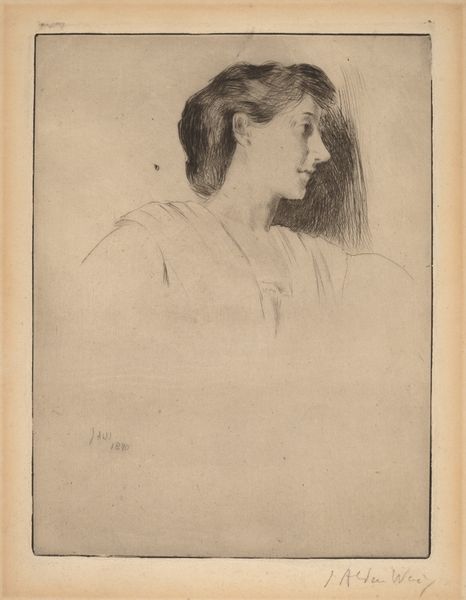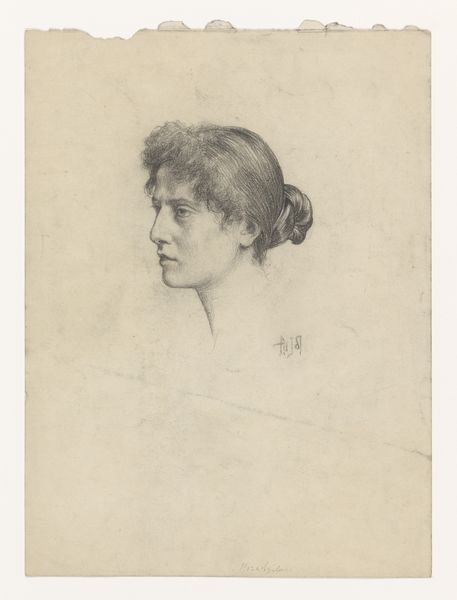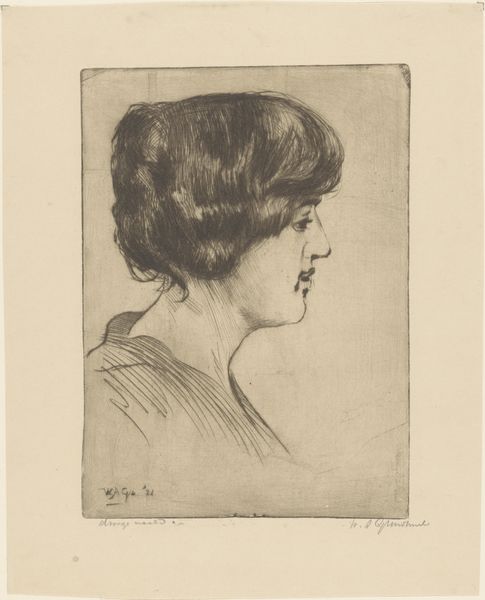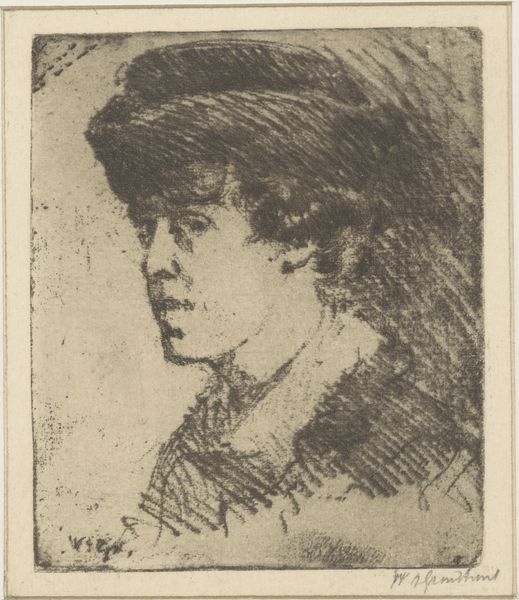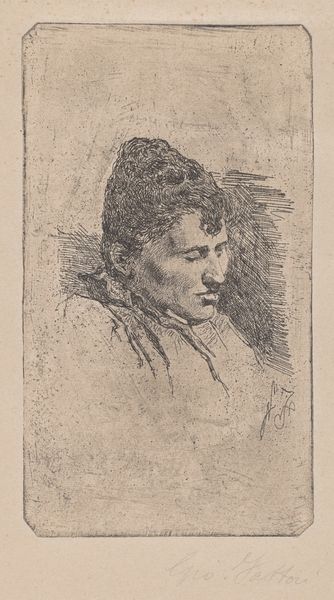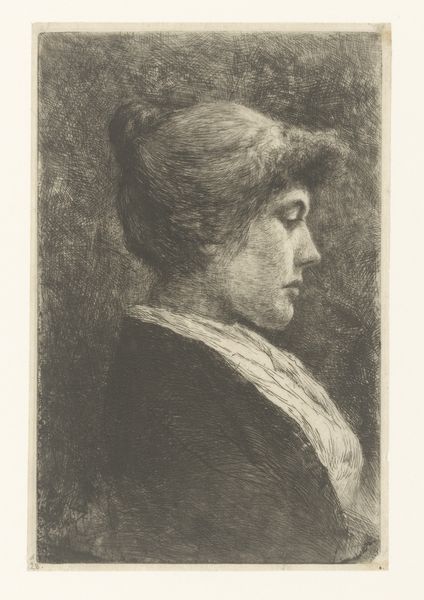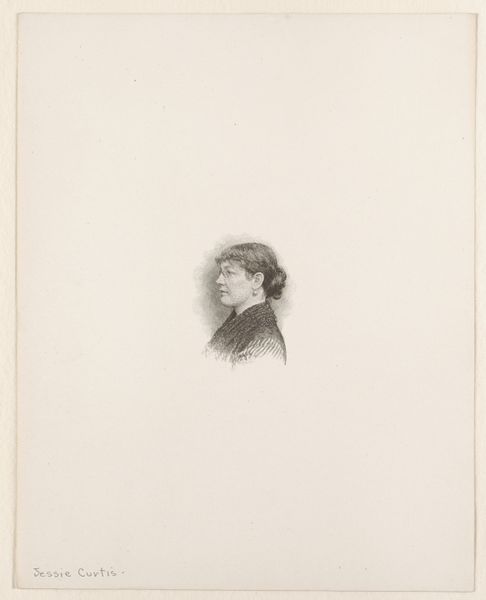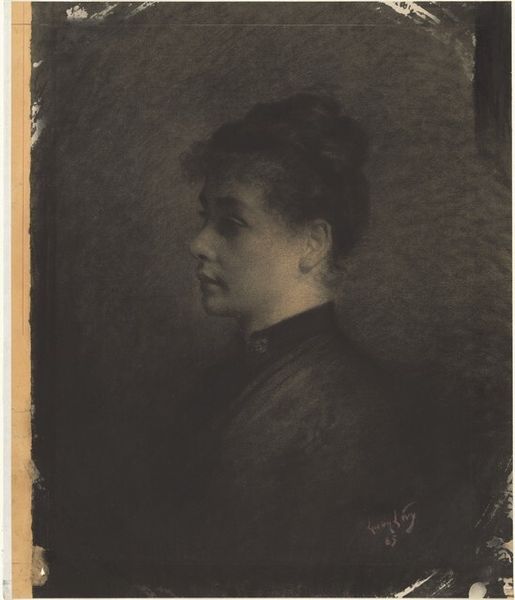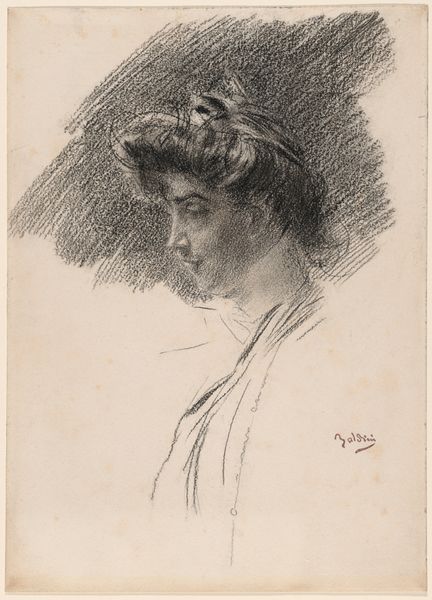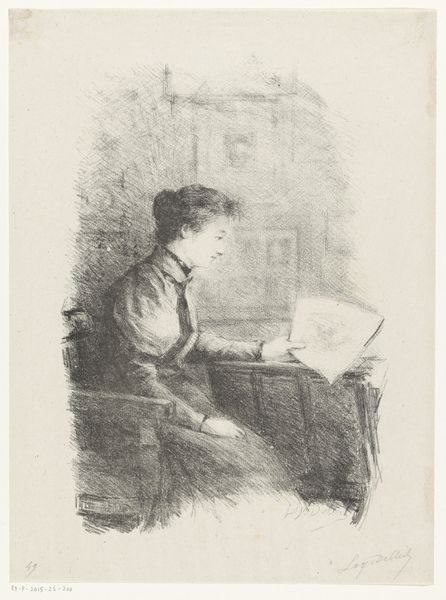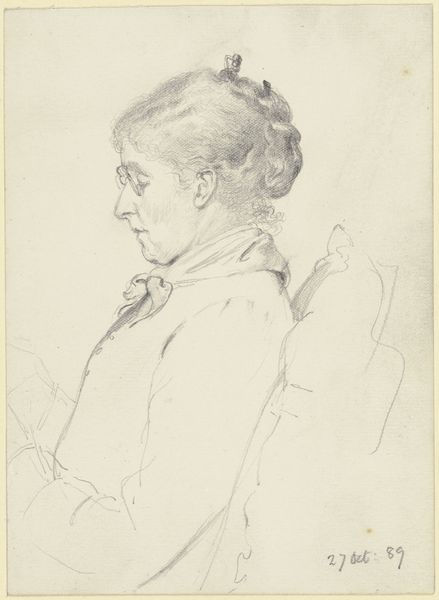
drawing, pencil
#
pencil drawn
#
drawing
#
impressionism
#
pencil sketch
#
landscape
#
pencil drawing
#
pencil
#
realism
Dimensions: overall: 32.5 x 24.7 cm (12 13/16 x 9 3/4 in.)
Copyright: National Gallery of Art: CC0 1.0
Editor: This is "A Woman in Profile and a Pollard Tree in Bloom" by Melchior Lechter, made with pencil around 1885. It's fascinating how the artist contrasts the solid form of the woman with the almost chaotic bloom of the tree. What's your take on it? Curator: What immediately strikes me is the artist’s deliberate focus on the *means* of production: pencil on paper. Consider the social context - sketching was accessible, a portable skill. Lechter captures the woman, and perhaps more importantly, the pollard tree - an object shaped by labor. Editor: Pollard tree? Curator: Yes, note how the tree’s been lopped for practical use - firewood perhaps, fodder for animals? The drawing elevates a mundane act of resource management, placing it alongside the portrait. How does this treatment challenge notions of "high" art? Editor: That's interesting... I usually associate portraiture with the elite, but placing it next to something as utilitarian as a managed tree sort of levels the playing field. Is the medium itself perhaps significant here? Pencil wasn't exactly precious. Curator: Precisely. Pencil is readily available, cheap, accessible to a broader range of practitioners. Unlike oil paint and canvas with their connotations of wealth and permanence, pencil invites sketching, fleeting moments, observation without pretension. What relationship, if any, do you see between those processes, and what you see *depicted* in the drawing? Editor: I suppose the loose style of the pencil reflects the daily act of shaping trees. This has really opened my eyes to seeing the piece as an artistic exploration into the interaction between people and their environment using accessible material and straightforward process. Curator: Agreed. And reflecting on these processes shifts our perspective on both artistic practice and material culture of the era.
Comments
No comments
Be the first to comment and join the conversation on the ultimate creative platform.
